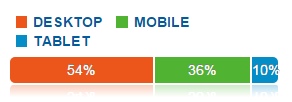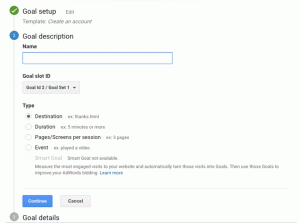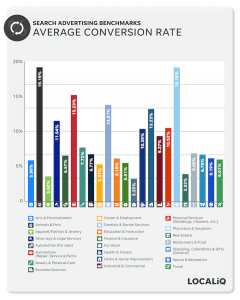
My consulting includes doing very deep, thorough, site audits. I’m looking for issues that have been recently killing their recent performance on search. All of my clients are convinced that there’s something outside themselves that have resulted in their site crashing in organic search. The initial conversation generally almost always reveals that the client feels victimized by Google. There’s generally a feeling of entitlement and a belief that if it worked in the past it should still work. They’re looking for the easy solution (generally, buying more backlinks and optimizing tags and copy) but Google has evolved quite a lot in the recent past and things will never be the same again. Before you start going through the five stages of grief (denial, anger, bargaining, depression, acceptance), please learn a little bit more about what you’re doing wrong with your search engine marketing strategy before Google thwacks you on the nose.
You’ve a Chequered Past
None of my clients have ever mentioned to me that they have tens of thousands of inbound links — the bulk of the volume (not influence) of their backlinks — coming in from the very worst spam sites. Sites that aren’t even elaborate topic-centric Google Juice factories but sites that not only spew keyword babble but many of them are throwing PHP script and “bandwidth limit exceeded” errors. I do a lot of my work at night and my girlfriend can call the spam sites at 100 yards. These sites are garbage but are inexorably linked to my clients’ sites. They’re generally on autopilot and unless we can sort out how to contact the provider, these black hat spam links from the worst spam sites ever will be skeletons in their closets. You really need to take responsibility for your actions. If you’re a very old site, it’s understandable: all of that dodgy stuff worked like catnip. It doesn’t work any more.
Want some proof? One of my best friends owns a law firm that is known globally for it’s amazing digital presence. The named owner of the company is a lawyer but is passionate about Search Engine Marketing. He has been building is content empire for maybe over a decade. He has created a real mess, over time. He built his content empire like London was built: hut by hut until it was a crash of streets and chaos.
Well, late last year he hired a former managing editor from a major city newspaper full-time in order to completely “rewrite” everything in his content empire. To turn it from being optimized for spiders and bots to being optimized for the real people, the real visitors, the real social and search engine hand off that is more essential these days when it comes to Google remaining on top in the competitive legal space. This is a lot of money: a world class writer/editor is just one cost.
That’s nothing.
The real cost is in basically rewriting decades of online writing, posts, pages, etc. And why? Because when your law office bill tens of millions of dollars and you spend hundreds of thousands of dollars annually on Google Ads, then spending back in the sort of real money that successful search has generated for your firm/agency/company is a no-brainer. In addition, he’s doing it now and in a big way because he knows that nobody else in the legal world will engage in this sort of escapade as well as he will, so when Google starts enforcing their changes, going from YIELD to STOP when it comes to gray-hat and black-hat SEO practices, my Friend, Esq., will have the sort of lead that no one else will be able to match — at least for a minimum of 18-months.
You Don’t Support Mobile

Circa 2015, unless you have a responsive site, you don’t support mobile. My current client swears on his mother’s grave that his site supports mobile. There’s even an entry in their Google Analytics that says there’s a mobile interface; however, when I ran their main URL through the W3C mobileOK Checker, I got 0%

Mobile is not the iOS and Android app that you had built for your site, mobile is not some mobile-compatible site that is not automagically and organically-discoverable when a tablet or phone arrived to your site from any search engine results at all from anywhere, mobile needs to be the ability of all of your visitors (upwards of 46% if you believe Google Analytics and combine mobile with tablet) to easily visit, navigate, search, explore, and get what they want no matter what device they’re using over whatever connection. In 2015, Responsive Design is essential.
Social Media is an Afterthought
Everyone has social media profiles but very few companies have internalized that Google is checking your social media pulse every day. They’re looking for signals such as number of followers, frequency of posting, linking (to others and to your own mother site), organic social sharing, visitor liking, retweeting, commenting, and resharing of the content that you share on your social media profiles as well as things like how often visitors share things unbidden from your site.
Most of my major clients have fewer than a thousand followers on their social sites. They may well be sharing content on their social media platforms but it’s generally spotty and lazy. They may share with Facebook and have their posts on Facebook auto-post to Twitter and Google+. And, even if they’re posting in earnest on Vine, Facebook, Instagram, and Pinterest, they’re not spending the extra time doing real-time monitoring for engagement, questions, reviews, and — especially — complaints. If you’re looking for a silver bullet, there isn’t one any longer.
These may well be the most valuable shares: when people share your content from your site with their community. And none of my clients have ever made that as easy or seamless as they should. Nobody’s ever gotten close. It’s such low-hanging fruit, though it does demand that you actually do more than just embed “share me” buttons, it requires that you commit to becoming a content-creator and not just a salesman or business person. That your site becomes a content platform more than simply a business card.
Property’s too Big for You to Farm
One thing I have discovered from my clients is that they often do not have the resources or staff to maintain the enormous web garden they have built over time. There are thousands of pages and not a lot of money (budgeted for this, is the truth, but they generally profess to not being willing to spend) so there’s no way they “have enough time” to write daily blog posts, the weekly in-depth articles, the Facebook/Twitter/Google+/Pinterest/Tumblr/Instagram content (plus tagging, monitoring, and engagement), plus making sure every single informational page is up-to-date, updated, still absolutely true, still working like it should, and hasn’t gone to seed. There is plenty of time, I tell them, you just don’t want to work any harder than you do right now. Next step, which they hate, is to really get your email newsletter strategy moving forward.
You’re on Life Support
 Google hates abandoned content. Like Paris, Milan, and New York, they can tell you’re wearing last season’s template (and it does make your site look fat). With regards CSS, JavaScript, Site Structure, and all that, Google can tell if you’re au courant or passé. Even more, Google demands “hot donuts” — they want the content that is the most current, relevant, and appealing. They don’t want that old bookcase full of 70s-era Encyclopedia Britannicas, they want new, cool, trendy, exciting.
Google hates abandoned content. Like Paris, Milan, and New York, they can tell you’re wearing last season’s template (and it does make your site look fat). With regards CSS, JavaScript, Site Structure, and all that, Google can tell if you’re au courant or passé. Even more, Google demands “hot donuts” — they want the content that is the most current, relevant, and appealing. They don’t want that old bookcase full of 70s-era Encyclopedia Britannicas, they want new, cool, trendy, exciting.
Google’s got the worst Fear of Missing Out (FoMO) in the Universe — even worst than your teenage daughter — so no matter what, you can never sit on your laurels. The moment you have finished revising your entire content site, it’s time to start over. Don’t update your server, template, CMS, and site content more often than every decade? You’re sunk. Mind you, you do have the advantage of having a very old site — that’s important, and a strong web of trust — essential, too; however, I hate to say it but Google has become Image Conscious. Very image conscious. In mane aspect — when it comes to usability and UI — they’re downright vein.
In Conclusion
Generally speaking, all my clients are searching for a panacea. There used to be, both for companies and affiliate marketers alike to game Google and play it like a fiddle, but no more. They let you have your free lunch, now here’s the price card and it’ll mean you need to shift your entire search marketing budget around a lot. Grin and bear it. It’ll pay off a thousand-fold in time.
There are so many other things that you need to consider these days that I didn’t even cover. The long and short of it is that in Google’s endless research they’ve discovered that form is as important to their users as function. And, now that form is no longer too expensive for the common man, Google’s beginning to insist that you spend some time getting off your laurels and do a better job of revising that old school textbook that’s decades outdated and come up with something much more compelling: color photos, a nice cover, maybe digital and interactive! The School District of Google won’t buy your old dusty textbook for their students any more. So, it’s time to evolve your own personal Encyclopaedia Britannica into your own personal Wikipedia. It might not turn your second-tier site into a top-tier overnight but it’ll surely be the kind of revision that will fuel your online commitment for at least the next 18-months to two years, as far a Google goes.
Want more information about Google’s goals for search? Well, they’re not being too secretive (I assume this leak was strategic as nobody believes what Google says about their algorithms when they’re being direct). According to The Moral Concept, here’s the complete (leaked) list of Do’s and Don’ts when it comes to the future of search on Google:
Do
- Good usage metrics showing User Satisfaction with your content/presentation
- Positive Social Shares/Mentions
- Positive “Reviews” on an Independent Google Verifiable Source
- Authoritative Outlinks in Your Content/Citing Your Sources
- .com, .net, and .org a quality/trust factor
- Address and /or Contact Clearly Listed on Each page
- Robust About Us info Inc. Mission Statement, Company Directory and other onsite signs of legitimate business
- Robust Contact and/or Customer Service Information
- A Very Positive Reputation On Blogs and Forums, etc. (News articles, Wikipedia articles, blog posts, magazine articles, forum discussions, and ratings from Yelp, Better Business Bureau, Amazon, Google Product Search, etc)
- Topical Experts Reference Your Site (On Web and Social)
- Date Info on Every Page – “Last Updated”– kept current, including copyright
- Clear Difference in Design Between Main Content And Supplemental Content
- Long standing Domain name, Long Standing Public Domain Registration
- Many Good Comments a Good Factor — Don’t block them or hide them from Googlebot if they are good, even Disqus.
- Test the Shopping Cart For Efficiency and Ease of Use
- Web Forms Need Auto-Complete
Don’t
- Bad usage metrics showing possible User Dissatisfaction with your content/presentation (including speed, UI, whitespace — or lack thereof, too many options, bad/thin/poorly written content, didn’t answer their problem / question fast or good enough, etc.)
- Duplicate or Aggregate, “Tag”, or “Category” Content
- Duplicate Titles and Meta Description (MC Nov 18, 2013)
- Aggressive “search phrase” keyword use onsite, including URL string, page content, AND HTML code like TITLE or ALT attributes
- Keyword Stuffed Internal Links on Blog pages etc.
- Off-topic / Multi-Topic Links or Content Onsite (eg.: can’t have a site on finance talk about cooking recipes in their blog)
- Clone sites are a strong panda factor
- Old or Outdated or Mistaken Facts/Info
- Garbage text, single sentence pages, spun text, bad construction/spelling/grammar, bad Search Results Pages, errors on page, etc.
- Made for Ads site – where users quickly click on your 50%+ ads above the fold
- Useless 404, or excessive 500 level, or any PHP/MySQL errors
- Main Content (purpose of page) is below the fold
- Excessive, unmarked, deceptive, interstitial, in-between the text ads and popups
- Bad Reputation on Independent Sites (like BBB, Wiki, Scamreport, etc.)
- Blocking Googlebot from Onsite CSS or JS Important for Design
- Supplemental/sidebar content useless or distracting
- Low quality/spammy/duplicated/auto-generated user generated comments / posts
- Exact Macth Domain (EMD) held to higher standards (Dec 2, 2013, JM. PAT re: URLs with “generic” words in them)
- Longer Exact Macth Domain (EMDs) are spam factor
- Slow speed a demoting factor – especially over 20 seconds to download, OR if creates ANY user dissatisfaction
- Any Ecommerce or Health or Legal Related sites etc. Your Money, Your Life(YMYL) pages held to higher standards to protect Users
- Reading level is too low (for YMYL pages) – jilted, simple, obvious text
- Broken Links/Images Don’t Load/Site is Not Maintained/Pages appear abandoned
- Any Affiliate or “monetized links” or “sneaky redirects” to affiliate sites (that are not nofollowed? or cloaked)
- Doorway pages
I hope that helps you out. There’s a lot of very good stuff there so please read it three times. It’s seriously Google’s playbook. Print it out and review your sites. It’s worth checking to see if you’re as open, honest, and transparent as you can be. And, stop registering your domains as private! Google hates that and assumes you’re being dodgy.
Good luck, lovely! Go git ‘em, Tiger!
(291)
Report Post







